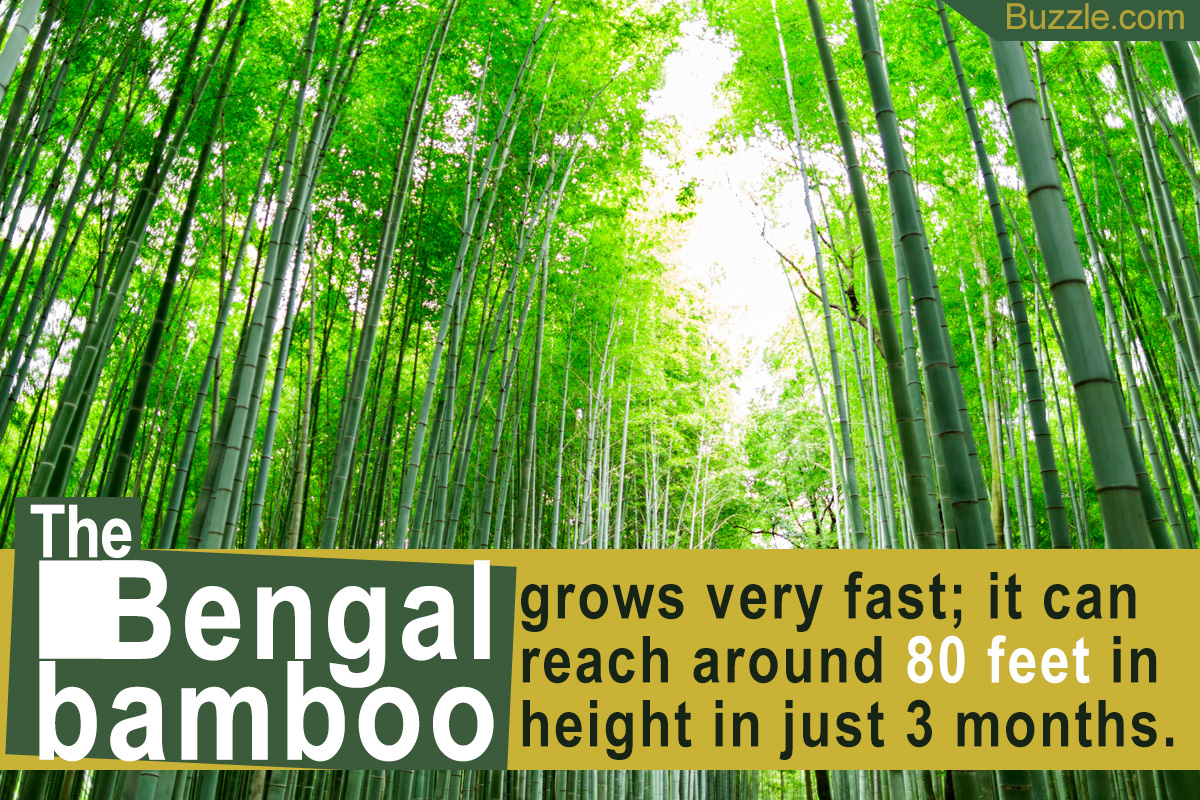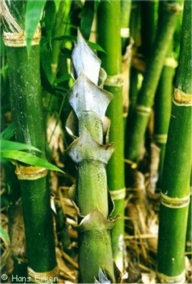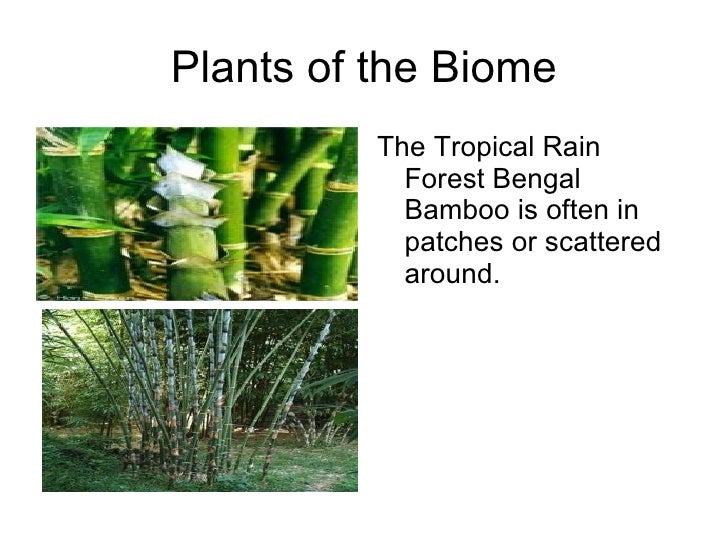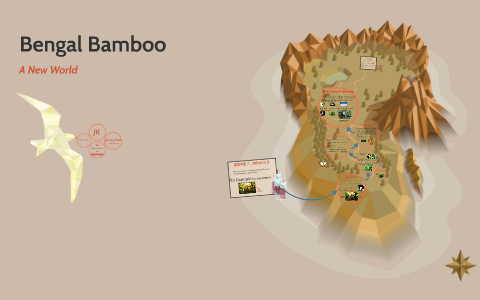The plant stores water in the trunk so it is available when it is needed most. Bengal Bamboo trees have many adaptations for living in wet or swampy rainforests such as their root systems and the ability to grow large heights.
 Utterly Surprising Adaptations Of The Bengal Bamboo Plant Gardenerdy
Utterly Surprising Adaptations Of The Bengal Bamboo Plant Gardenerdy
To counter these adverse conditions the Bengal bamboo has several structural adaptations which enable it not only to survive but to thrive and reproduce at an exceptionally fast rate.

Bengal bamboo adaptations in the tropical rainforest. The rainforest gets an average of eighty inches of rain a year as opposed to the desert which gets just ten inches average per year. Bougainvillea likes a climate from subtropical to tropical but prefers a tropical climate growing in dense forests where it can cling. The roots are large in order to collect more water.
The Bengal Bamboo has adapted to grow at an extremely quick rate it is possible for these plants to reach 80 feet in just three months the plant has adapted to the extreme hydration of the rainforest by developing vascular bundles that absorb water and wick it up the cane. The Bengal bamboo is used mainly to make paper in a Indian paper making factory they are also use to make furniture baskets fishing rods and to make a flute. It has multiple vascular bundles so that it can absorb water faster.
A rainforest has plenty of water for this plant to grow. Plant life in the Rainforest. It grows fast to reach the water and sunlight.
Bengal bamboo has adapted by growing at one of the fastest rates of any plant to 80 feet in 3 months. That means it can adapt to both colder and warmer weather. The world without Bengal Bamboo Bengal bamboo is important to its environment it can reduce soil erosion.
Bengal Bamboo grows tall very fast so it can get more sun through the thick trees. The Bengal Bamboo adapts to its enviorment by growing tall to take up all the rain and sunlight. The thick cell walls make sure no water leaks out.
Another adaptation is the plants ability to adjust to different climates. Bengal Bamboo- Its adapted to growing in the Southeast Asian Rainforest by growing underground. Since the rainforest is a moist environment Bengal Bamboo trees have a special root system that sucks up water after heavy rains occur.
Bengal bamboo adapted to the extreme hydration of the rainforest by developing vascular bundles that absorb water and wick it up the cane drinking in enormous amounts of water. It has multiple vascular bundles that are smaller so it can absorb water faster. This means that as a young shoot the bamboo plant may not get enough water and sunlight.
Bengal bamboo also release 30 more oxygen into the atmosphere and absobe more carbon dioxide compared to other plants. Its also adapted to the temperature. Bengal bamboo is native to Southeast Asian rainforests where it grows in 40 to 100 degree Fahrenheit temperatures with an average of 50 to 260 inches of rainfall.
Bengal Bamboo has vascular bundles to draw water to the top of the plant. The Bengal Bamboo is listed above as an unique plant to the Southeast Asian Rainforest and it also has some interesting adaptations. Bengal bamboo also grows really fast.
Bengel bamboo has many adaptations that make it suited to live in the tropical rainforest biome. It physically adapts to its environment by growing tall fast so it gets a lot of rain and sunlight. It requires a lot of water so the excessive rain of the rainforest is perfect.
Firstly bamboo is extremely adapted to its climate. Bengal Bamboo has three main adaptations with completely different parts of the grass. Coconut Tree-Its adapted to growing in hot areas.
This plant is also able to soak up water from heavy rains that could take place during storms and therefore the Bengal Bamboo. Once in the canopy it absorbs sunlight to make its food by photosynthesis. The Jambu plant can adapt to any soil condition including the poor soil of the rainforest.
It requires a lot of water so the excessive rain of the rainforest is perfect. Bengal bamboo has adapted by growing at one of the fastest rates of any plant to 80 feet in 3 months. The bengal bamboo requires a lot of water that is why the rainforest is a perfect place for it to grow.
It has very thick cell walls which help provide support. The Bengal Bamboo needs plenty of sunlight and rainfall so it seems fitting that one of its adaptations is being able to grow very tall in a short period of time. Bengal bamboo is an extremely fast growing plant this particular plant thrives in environments where there is a large amount of.
Bamboo does very well in a moist environment with a lot of precipitation. These are all examples of structural adaptations bengal bamboo grows tall very fast so it can get sun light through the thick trees. It can also survive in both dry and wet weather.
Once in the canopy it absorbs sunlight to make its food by photosynthesis. Because of these feature bamboo greatly decreases.
 Utterly Surprising Adaptations Of The Bengal Bamboo Plant Gardenerdy
Utterly Surprising Adaptations Of The Bengal Bamboo Plant Gardenerdy
Plant Adaptations Giant Pandas
 Blue Planet Biomes Bengal Bamboo
Blue Planet Biomes Bengal Bamboo
Plants Tropical Rainforest Biome
 Utterly Surprising Adaptations Of The Bengal Bamboo Plant Gardenerdy
Utterly Surprising Adaptations Of The Bengal Bamboo Plant Gardenerdy
Plant Adaptations Giant Pandas
 Adaptation Of The Bengal Bamboo Plant Bamboo Bamboo Plants Growing Bamboo
Adaptation Of The Bengal Bamboo Plant Bamboo Bamboo Plants Growing Bamboo
 Utterly Surprising Adaptations Of The Bengal Bamboo Plant Gardenerdy
Utterly Surprising Adaptations Of The Bengal Bamboo Plant Gardenerdy
 Tropical Rainforest Biome Animals Plants Ppt Video Online Download
Tropical Rainforest Biome Animals Plants Ppt Video Online Download
 5th Period Tropical Rain Forest
5th Period Tropical Rain Forest
 Utterly Surprising Adaptations Of The Bengal Bamboo Plant Gardenerdy
Utterly Surprising Adaptations Of The Bengal Bamboo Plant Gardenerdy
 Biomes Jared Jungquist Tropical Rainforest Description Specific Plant Bengal Bamboo It Physically Adapts To Its Environment By Growing Tall Fast Ppt Download
Biomes Jared Jungquist Tropical Rainforest Description Specific Plant Bengal Bamboo It Physically Adapts To Its Environment By Growing Tall Fast Ppt Download
 Bengal Bamboo By Hannah Sam On Prezi Next
Bengal Bamboo By Hannah Sam On Prezi Next
 Tropical Rain Forest By Griffin Cerra
Tropical Rain Forest By Griffin Cerra




0 Response to "Bengal Bamboo Adaptations In The Tropical Rainforest"
Posting Komentar